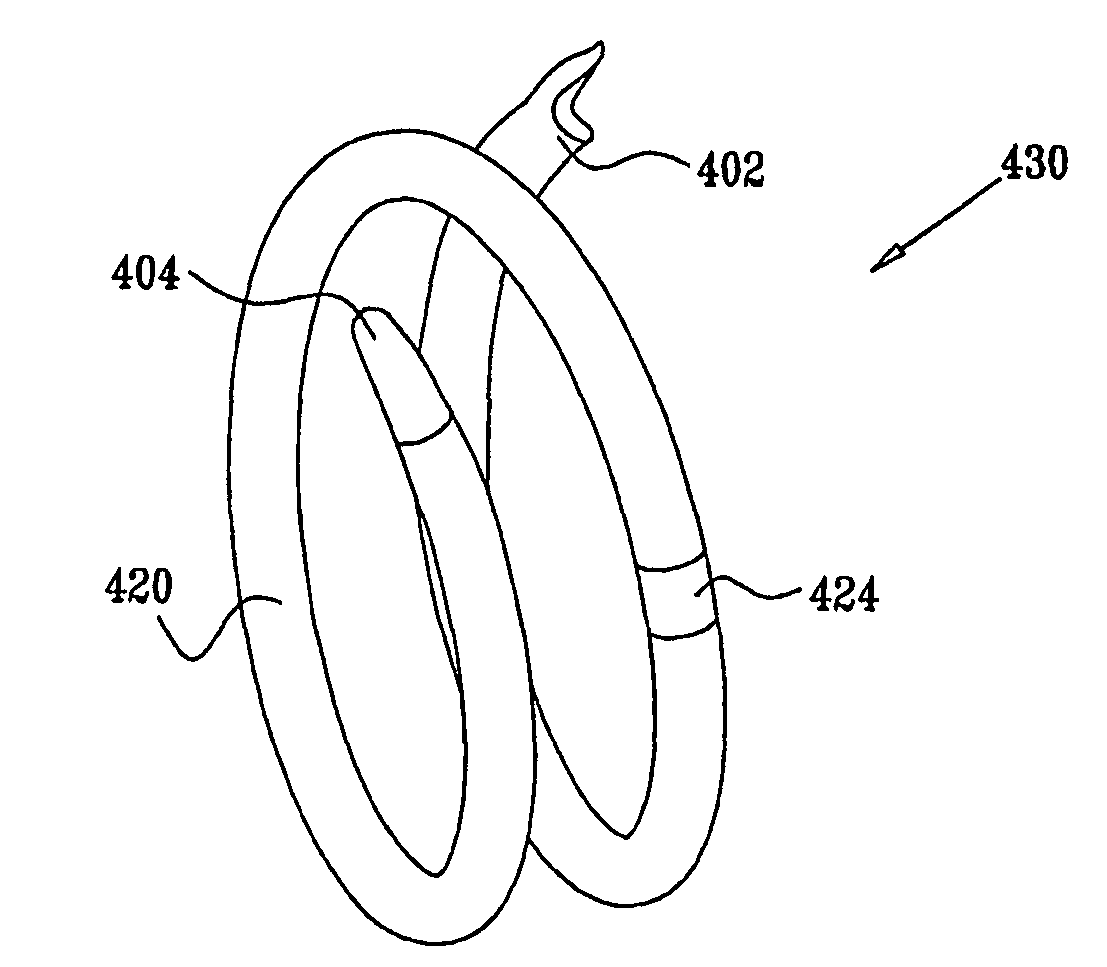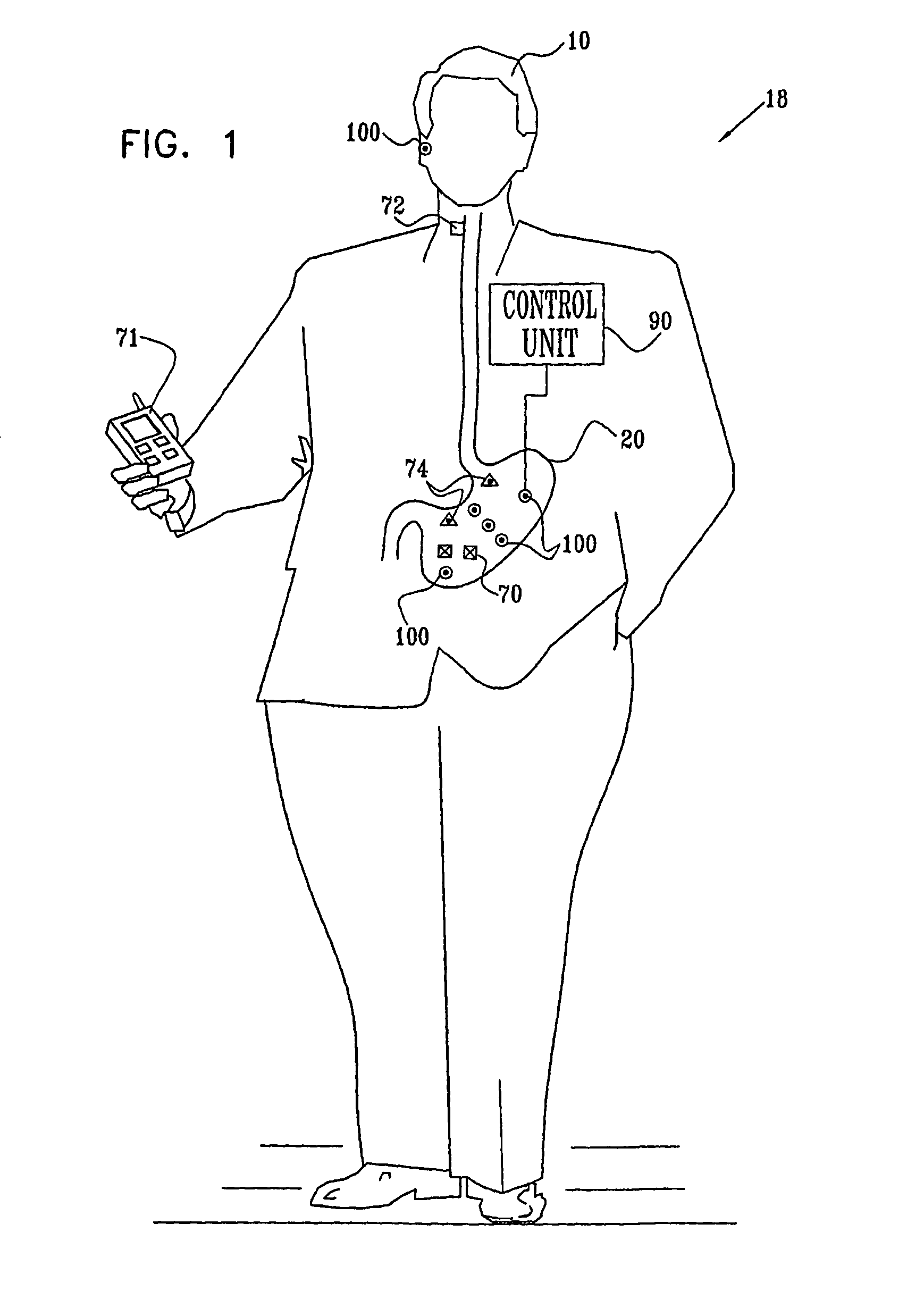Wireless leads for gastrointestinal tract applications
a technology of gastrointestinal tract and wires, applied in the field of tracking eating habits, can solve the problems of diabetes, gallbladder disease and hypertension, and increased risk of cardiovascular disease, so as to increase the sensation of satiation of the subject, increase the aspect of tissue contraction, and increase the effect of tissue contraction strength
- Summary
- Abstract
- Description
- Claims
- Application Information
AI Technical Summary
Benefits of technology
Problems solved by technology
Method used
Image
Examples
Embodiment Construction
[0196]FIG. 1 is a schematic illustration of diet evaluation apparatus 18, which detects when a patient 10 swallows, and detects the type and amount of matter ingested, in accordance with a typical embodiment of the present invention. Typically, but not necessarily, apparatus 18 additionally determines, responsive to the detection, whether to apply electrical energy to modify the activity of tissue of patient 10. Apparatus 18 typically comprises mechanical sensors 70, supplemental sensors 72, local sense electrodes 74, operator controls 71, and one or more current-application electrodes 100.
[0197]Electrodes 74 and 100 are typically coupled to the serosal layer of a stomach 20 and / or inserted into the muscular layer of the stomach in the fundic and antral regions. Alternatively or additionally, the electrodes are coupled elsewhere on the stomach, gastrointestinal tract, or to other suitable locations in or on the patient's body. The number of electrodes and sensors, as well as the pos...
PUM
 Login to View More
Login to View More Abstract
Description
Claims
Application Information
 Login to View More
Login to View More - R&D
- Intellectual Property
- Life Sciences
- Materials
- Tech Scout
- Unparalleled Data Quality
- Higher Quality Content
- 60% Fewer Hallucinations
Browse by: Latest US Patents, China's latest patents, Technical Efficacy Thesaurus, Application Domain, Technology Topic, Popular Technical Reports.
© 2025 PatSnap. All rights reserved.Legal|Privacy policy|Modern Slavery Act Transparency Statement|Sitemap|About US| Contact US: help@patsnap.com



